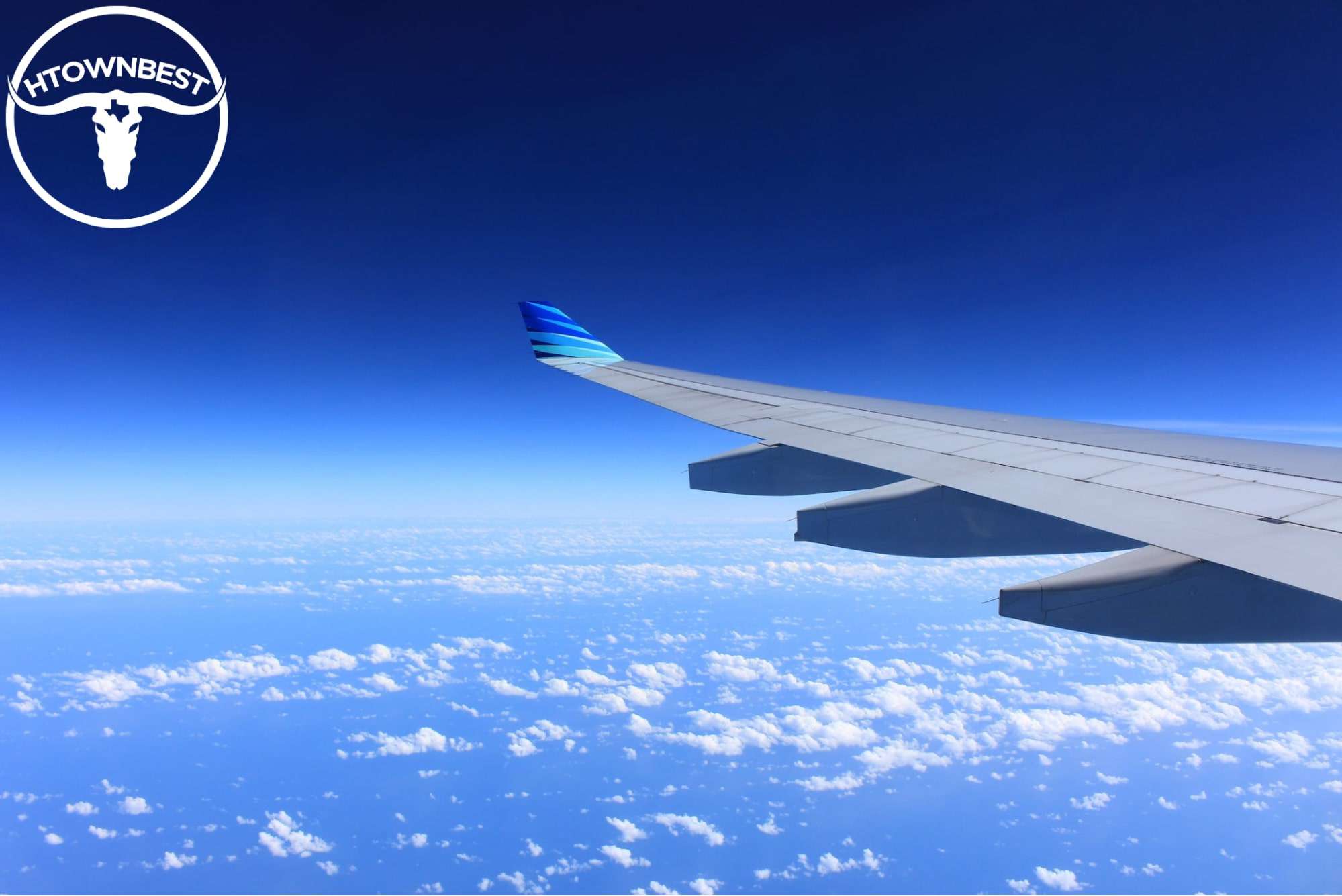Why are Houston Flights so Expensive?

- Reasons for the High Cost of Flights in Houston
- High Demand
- Limited Competition
- Fuel Costs
- Maintenance and Operation Costs
- Seasonal Fluctuations and Surges
- Congestion at Airports
- Location of Houston*
- Flight Costs in Houston Vs. Other Major Cities*
- How to Mitigate Costs of Flights
- Book Your Flight in Advance
- Use Budget Airlines
- Consider Alternative Airports
- Use Fare Comparison Websites
- Use Travel Rewards Credit Cards
Houston is one of the largest cities in the United States and a major hub for travel, commerce, and industry. With its numerous attractions, vibrant culture, and economic opportunities, it’s no wonder that people from all over the world visit this vibrant city.
However, flights to and from Houston can be surprisingly expensive, especially compared to other major cities.
In this article, we’ll try to figure out why flights to this part of Texas are so costly and what fliers can do to try and mitigate these high flying expenses.
Reasons for the High Cost of Flights in Houston

Houston flights are expensive due to a number of factors like high demand, limited competition, fees, surcharges, seasonal fluctuations, and congestion at the airports.
Below are some factors that may account for the high flight costs in Houston.
High Demand

Houston is the most populated city in Texas and a hotspot for business and tourism. As a result, there is a high demand for flights to and from the city.
According to Fly2Houston, Houston’s two major airports, George Bush Intercontinental Airport (IAH) and William P. Hobby Airport (HOU), serve a combined total of over 60 million passengers each year.
The high demand for flights in Houston results in higher ticket prices, especially during peak travel seasons. Airlines may also charge a premium for seats.
Limited Competition

Houston is served by a variety of airlines that operate flights in and out of the city. Some of the major airlines that operate in Houston include American Airlines, Delta Air Lines, United Airlines, Southwest Airlines, and Spirit Airlines.
Unlike many other major cities, however, Houston doesn’t have a lot of low-cost carriers. This lack of competition means that the major airlines can charge higher prices without much fear of losing customers to lower-priced alternatives.
Moreover, the number of airlines operating in the city is limited compared to other major travel hubs in the United States.
This is due to a combination of factors, including the dominance of a few major airlines in the U.S. market, the high cost of operating in Houston, and the limited number of gate slots available at the city’s airports.
Fuel Costs

Houston is particularly susceptible to fluctuations in fuel prices due to its location in the Gulf of Mexico.
According to data from the U.S. Energy Information Administration, the average price of gasoline in Houston is typically higher compared to the national average.
This table compares the price of gas in cents per gallon in major cities in the USA.
| CITY | FUEL COST (CENTS PER GALLON) |
| Pennsylvania | 58 |
| Houston | 57 |
| California | 57 |
| Washington | 49 |
| Oregon | 38 |
High fuel costs naturally directly influence the cost of airline tickets. When fuel prices rise, airlines must also raise their prices to cover the increased costs.
Maintenance and Operation Costs

One of the main reasons for the increased cost of maintaining and operating flights in Houston is the extreme weather conditions.
Houston experiences hot and humid summers, frequent thunderstorms and hurricanes, which can damage aircraft and require additional maintenance.
This means that airlines operating in Houston must invest more in maintenance and repair to ensure their planes remain airworthy and safe to fly.
Moreover, the George Bush Intercontinental Airport, the city’s primary airport, is a large and busy airport that requires constant upkeep and maintenance.

The airport’s facilities, such as runways, terminals, and parking areas, must be maintained to ensure the safety and comfort of passengers.
Furthermore, the cost of labor also contributes to the higher costs of operating flights in Houston. Wages for aviation professionals, such as pilots, mechanics, and air traffic controllers, are higher in Houston than in other parts of the country.
Seasonal Fluctuations and Surges

Seasonal fluctuations and surges are common factors that can make flights to Houston more expensive during certain times of the year.
This is due to various reasons, such as increased demand for travel during peak seasons, limited availability of flights, and the overall cost of operating an airline.
Moreover, since Houston is a popular tourist destination the city experiences a surge in visitors during certain times of the year. One example is the Houston Livestock Show and Rodeo which attracts millions of visitors during March.
Similarly, the holiday season can also result in an increase in flights as people travel to visit family and friends.
Congestion at Airports

Houston is served by two major airports, George Bush Intercontinental Airport (IAH) and William P. Hobby Airport (HOU). Both of these airports can experience high levels of congestion.
Congestion can occur for a variety of reasons, including high passenger volume, limited runway and gate space, and inclement weather conditions.
When airports become congested, it can lead to flight delays and cancellations. This can result in additional costs for airlines, such as crew overtime pay and aircraft fuel consumption.
Airport congestion can also affect the availability of flights. This can limit the options available to passengers and drive up prices for the available flights.
Location of Houston*

Houston is located in the southeastern region of the United States, which is relatively far from major airline hubs such as Chicago and New York City.
As a result, flights to and from Houston often require longer travel times and additional fuel costs, which can drive up the price of airline tickets.
In addition, Houston’s location is far from major fuel production centers which means that airlines must pay higher prices to transport fuel to the city.
Although the majority of the country’s fuel production occurs in the Gulf Coast region, primarily in Louisiana and Texas, but even within Texas, the majority of fuel production occurs in areas located far from Houston, like Beaumont and Corpus Christi.
Flight Costs in Houston Vs. Other Major Cities*

The average prices for flights from Houston can vary greatly depending on the time of year, the airline, and the destination.
On average, a one-way domestic flight within the United States from Houston can cost anywhere from $300 to $400 or more.
An international flight from Houston to Europe or Asia can cost $1,000 to $2,500 or more.
The table below shows the average costs of flights in Houston and in other major cities from estimates gathered from Flight Compare.
| CITY OF ORIGIN | AVERAGE COST OF FLIGHT |
| Houston | $300 – $1000 |
| New York City | $300 – $800 |
| Los Angeles | $250 – $800 |
| Chicago | $250 – $800 |
| Miami | $200 – $700 |
| Dallas | $200 – $800 |
How to Mitigate Costs of Flights

There are many ways to make your flight to and from Houston more affordable. Whether you book in advance, look for promotions or use a budget airline, here’s a few tips on how to save some money.
Book Your Flight in Advance

Booking flights in advance is a smart strategy for mitigating the high cost of flying in Houston. This is especially true for passengers traveling during peak seasons.
By planning ahead and booking flights early, passengers can secure better prices and avoid paying premium rates. When it comes to air travel, prices tend to increase as the departure date approaches.
Another advantage of booking flights in advance is that it allows for greater flexibility. Passengers can often choose from a wider range of flight options and departure times, which can help them find a more convenient and affordable travel itinerary.
One way to be flexible with your travel dates is to avoid peak travel times. By choosing to travel during less popular times, such as mid-week or during the shoulder season, you can often find lower fares.
Use Budget Airlines

Choosing budget airlines can be an effective way to mitigate the high costs of flying in Houston. Some of these include Spirit Airlines and Frontier Airlines.
Budget airlines offer lower ticket prices by reducing or eliminating some of the frills and amenities offered by traditional airlines. Some examples would be in-flight meals, entertainment, and baggage allowances.
While this means that passengers may have to pay extra for certain services, such as checked baggage or seat selection, the overall cost savings can be significant.
The table below compares the prices of some budget airlines with a more established airline with higher prices.
| Airline | Domestic Flight Avg. Price | Local Flight Avg. Price |
| Spirit Airlines | $100-150 | $50-75 |
| Frontier Airlines | $100-175 | $50-100 |
| Southwest Airlines | $100-200 | $75-125 |
| United Airlines | $200-400 | $150-250 |
While some budget airlines offer rock-bottom prices, they may also have stricter rules and fees for things like baggage and cancellations. It’s important to read the fine print and understand the airline’s policies before booking.
Additionally, it’s important to keep in mind that budget airlines may have different safety records and customer service standards than traditional carriers.
Consider Alternative Airports

Choosing alternative airports in Houston can be a great way to save on the high cost of flying to the city.
When looking to save money on flights to Houston, you can consider looking into alternative airports like Ellington Field.
While this airport may not have as many commercial flights as IAH or HOU, it can be a great option for travelers who are flexible with their travel dates and times.
Additionally, some airlines like Southwest offer flights to and from Ellington Field at lower prices than their flights to and from the larger airports.
Another option for travelers looking to save money on flights to Houston is to fly into nearby cities like Austin, San Antonio, or Dallas. While this may require some additional travel time or transportation costs, it can be a great way to save money on airfare.
Use Fare Comparison Websites

Fare comparison websites allow travelers to compare prices and deals from multiple airlines at once, making it easy to find the best possible deal on airfare.
Some of the most popular fare comparison websites include Kayak, Expedia, and Orbitz. These allow users to input their travel dates and desired destination, and then compare prices and deals from multiple airlines at once.
They may also offer additional tools and features, such as alerts for price drops, fare predictions, and flexible date options.
These websites can also help travelers save money by highlighting special deals and promotions that may not be available through the airlines’ websites directly.
Use Travel Rewards Credit Cards

Travel rewards credit cards offer rewards and perks for travel-related purchases, such as airfare, hotels, and car rentals. Some even offer sign-up bonuses, which can be worth hundreds of dollars in travel credits or points.
If you sign up, you might also have access to additional perks, such as priority boarding, free checked bags, and access to airport lounges. This can make the travel experience more comfortable and enjoyable!
When choosing a travel rewards credit card, it’s important to consider the annual fees, interest rates, and other fees associated with the card. Also keep in mind your travel goals and preferences, such as an airline-specific card or a general travel rewards card.





